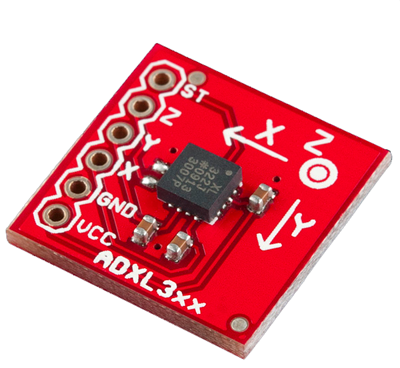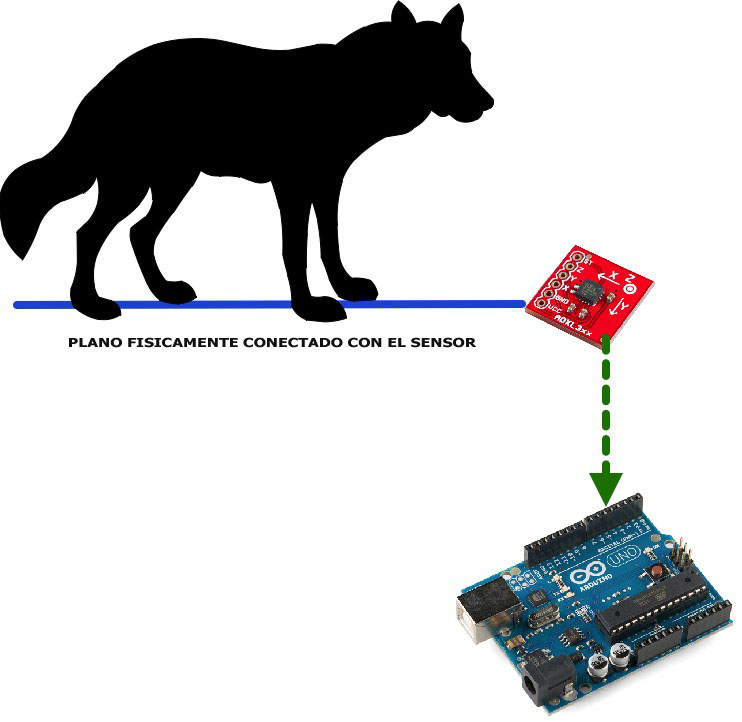
 | Este sensor se puede utilizar para disparar la cámara cuando existe movimiento en un plano. Ejemplos: animales que se recargan en una superficie, pájaros que se quedan en un alambre, cuando hay un movimiento en general (temblores). |

| /* ADXL3xx Reads an Analog Devices ADXL3xx accelerometer and communicates the acceleration to the computer. The pins used are designed to be easily compatible with the breakout boards from Sparkfun, available from: http://www.sparkfun.com/commerce/categories.php?c=80 http://www.arduino.cc/en/Tutorial/ADXL3xx The circuit: analog 0: accelerometer self test analog 1: z-axis analog 2: y-axis analog 3: x-axis analog 4: ground analog 5: vcc created 2 Jul 2008 by David A. Mellis modified 4 Sep 2010 by Tom Igoe This example code is in the public domain. Version modificada para que encienda el LED */ // these constants describe the pins. They won't change: const int groundpin = 18; // analog input pin 4 -- ground const int powerpin = 19; // analog input pin 5 -- voltage const int xpin = A3; // x-axis of the accelerometer const int ypin = A2; // y-axis //const int zpin = A1; // z-axis (only on 3-axis models) void setup() { // initialize the serial communications: Serial.begin(9600); // Provide ground and power by using the analog inputs as normal // digital pins. This makes it possible to directly connect the // breakout board to the Arduino. If you use the normal 5V and // GND pins on the Arduino, you can remove these lines. pinMode(groundpin, OUTPUT); pinMode(powerpin, OUTPUT); digitalWrite(groundpin, LOW); digitalWrite(powerpin, HIGH); pinMode(13, OUTPUT); } void loop() { // print the sensor values: Serial.print(analogRead(xpin)); // print a tab between values: Serial.print("\t"); Serial.print(analogRead(ypin)); // print a tab between values: Serial.print("\t"); // Serial.print(analogRead(zpin)); Serial.println(); // delay before next reading: if ((analogRead(ypin))>521){ // detecta movimiento en y digitalWrite(13, HIGH); // set the LED on delay(1000); // wait for a second digitalWrite(13, LOW); // set the LED off } delay(1); } |